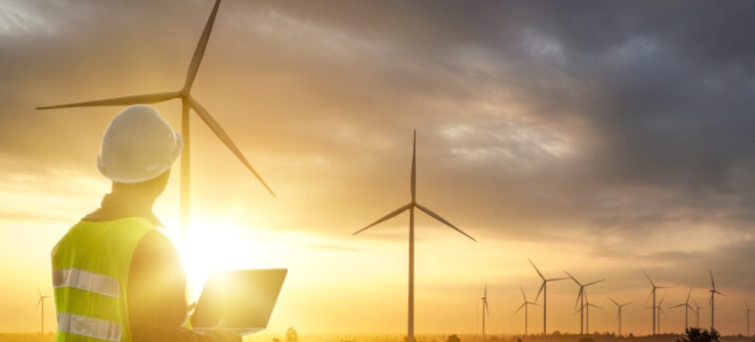
On May 15, 2023, after two years of consultation with public and private stakeholders and 12 draft plans, Prime Minister Pham Minh Chinh approved Vietnam's PDP8 as part of Vietnam's National Electricity Development Plan 2021 – 30. PDP8 calls for significant expansion of the country's electricity grid, more than doubling its capacity from 69 GW in 2020 to 150 GW by 2030, and set energy transition goals for achieving carbon neutrality by 2050. Much of the expansion is slated to come from investments in offshore wind facilities and LNG-supplied natural gas power plants.
The plan will require a total investment of US$134.7 billion by 2030 to fund new generation facilities and grid upgrades, part of which will come from foreign investors. In December 2022, the Group of Seven nations pledged to provide Vietnam with US$15.5 billion to help end the country's reliance on coal-fired power plants, after offering similar incentives to South Africa and Indonesia. Vietnam's commitment to concrete energy transition goals in PDP8 may help unlock this investment by alleviating brewing uncertainties over the two-year delay to the plan's approval.
While PDP8 calls for a significant evolution of Vietnam's electricity grid and its entry into the offshore wind and LNG spaces, it does not call for an end of coal-fired generation by 2030, which could present risks for foreign-pledged investments intended to aid the transition away from coal power plants. Total generation capacity from coal power plants would increase from 2020 to 2030, but no new coal power plants would be developed after 2030, and existing plants would begin to transition to cleaner fuels, such as biomass or ammonia.
PDP8 provides specific targets for Vietnam's energy mix by 2030 but also set goals to help the country achieve carbon neutrality by 2050. Longer-term goals include the gradual phase-out of coal, increased reliance on natural gas, specifically LNG, and an expansion of renewable energy capacity from 30.9% of the country's energy mix in 2030 to 67.5% by 2050, primarily through investments in offshore wind and rooftop solar generation. The 2050 targets would require much more investment than the 2030 targets, with total cost estimates ranging from US$399 billion to US$523 billion.
A sector-by-sector breakdown of PDP8's generation-related targets is as follows:
LNG and Natural Gas
In 2020, natural gas accounted for 9.03 GW (13.1% of Vietnam's total generation capacity) all of which was sourced from domestic gas. PDP8 calls for expanding LNG and natural gas capacity to 37.33 GW (24.8%) by 2030. The bulk of this expansion would come from LNG, which Vietnam does not currently utilize. PetroVietnam Gas recently completed construction of the country's first LNG importation terminal, with a capacity of one million tonnes per year, and has issued a tender seeking to purchase the country's first LNG cargo. PDP8 plans for development of 13 LNG-fired power plants by 2030, with the first scheduled to begin operating in late 2024.
Coal
Although PDP8 does not call for immediate reductions in Vietnam's reliance on coal, coal would become a smaller share of the total energy mix by 2030. In 2020, total capacity of coal-fired power plants was 21.38 GW (30.8%) of the energy mix. By 2030, Vietnam plans to increase this to 30.13 GW, but this would reduce its share to 20% of planned energy capacity. After 2030, Vietnam would not develop any new coal-fired power plants, and active plants that are 20 years or older will begin transitioning to biomass or ammonia. Plants over 40 years old that cannot achieve this fuel switch will be retired.
Renewable Energy Sources
In 2020, hydropower produced 21 GW (30.3%) of total capacity. Under PDP8, total capacity would increase to 29.5 GW (19.5%) by 2030, and up to 36 GW (6.3%) by 2050. More ambitious targets for renewable sources, however, relate to wind and solar expansion. Wind accounted for just 0.54 GW (0.8%) of total capacity in 2020; PDP8 would scale this up to 27.88 GW (18.5%) by 2030, with 6 GW of offshore wind power by 2030. By 2050, the goal is to generate 70 GW from offshore wind alone. Vietnam also aims to install rooftop solar on half of all office buildings and homes by 2030, ultimately generating up to 189 GW by 2050. In a press release on May 16, 2023, the government stated "[f]rom now until 2025, there is no limit to the capacity of rooftop solar power development provided that the prices are reasonable and the existing transmission network is not overloaded."1 Vietnam previously experienced a boom in solar development in 2019 and 2020, but much of the electricity could not be delivered to the grid without transmission and other capacity upgrades. PDP8's planned investments in transmission and distribution infrastructure could alleviate these issues and bolster Vietnam's transition to rely more heavily on renewable energy sources.
Next Steps
PDP8 envisages legal reforms to meet Vietnam's energy development goals. Specific measures to be led by the Ministry of Industry and Trade include amendments to the Electricity Law to account for electricity market regulation, including investment and electricity pricing policy, as well as the development of mechanisms for investment auctions, direct power purchase agreements and electricity price management. Further reforms to be expected include amendments to the Law on Economical and Efficient Use of Energy and the adoption of a Law on Renewable Energy. The Ministry of Industry and Trade is to submit a planning implementation plan to the Prime Minister in June 2023.
1 Gov't approves National Power Development Plan 8, Socialist Republic of Vietnam, available here.







